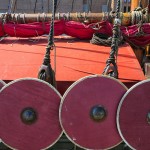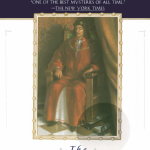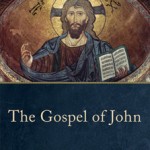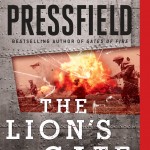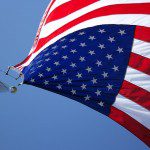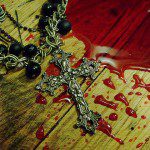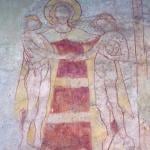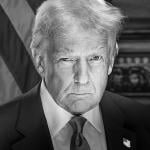I’ve a difficult relationship with the atomic bomb. I mean that sincerely. I have a great ambivalence in my soul about the bombings of Hiroshima and Nagasaki.
The Catholic Church teaches that targeting civilians is always and everywhere wrong, even if the war is otherwise just. By that measure, the German bombing of London and the American bombing of Nagasaki are both ruled out of court, even leaving the issue of nuclear weapons to the side. On top of that, the cities of Hiroshima and Nagasaki held the two largest communities of Japanese Catholics, communities found by St. Francis Xavier in the 16th century; and many of them perished. As one trying to be a faithful son of the Church, I accept this teaching.
But on the other hand….
My father was born in 1926. When he turned 16 (or, possibly slightly before that) he enlisted in the U.S. Navy, was trained as an electrician’s mate, and was sent to serve on a destroyer in Admiral Halsey’s task group. On August 6th, 1945, as best as he could remember, his destroyer was anchored in Tokyo Bay. The Japanese fleet was out of fuel (Japan has no oil reserves of its own), and out of ammunition for the big guns, and the pride of the Japanese navy, such as remained, were no more effective than hulks. All that remained was to conquer Japan itself: a country of people who had always preferred death to dishonor, who thought that surrender was vile, and who had been systematically lied to about the progress of the war.
My father, who had never trained as a foot soldier, had been issued a field kit, and he and his crew-mates were being prepared to go ashore as part of the invasion force. If he had done so, it is likely that he would never have come home again. He would never have met my mother, and I wouldn’t be here. That’s a frightening thought.
I’ve sometimes thought of myself as a child of the A-Bomb. That sounds too pretentious for words, but it’s true. Had we not Dropped the Bomb, I wouldn’t be here. That’s a hard thing to know, that I owe my existence, at least in part, to such massive death and destruction.
Perhaps because of this, I’d never gone out of my way to find out more about the bombings or their aftermath. The bombs had been dropped; Hirohito surrendered; my father came home, and went to college, and then to work, and married my mother. That was enough.
And then Julie Davis, among others, began talking about a book, A Song for Nagasaki: The Story of Takashi Nagai, by Fr. Paul Glynn, about a man named Takashi Nagai, a man who became known in his own lifetime as the Saint of Urakami. Born in a traditional Japanese family, the son of a doctor, Nagai went to college to become a physician himself. While in college he became an atheist, as was common in Japan at that time; and in due course he became a pioneer of radiology in the city of Nagasaki. X-rays were poorly understood, and early X-ray machines were unshielded; and he went into the field knowing that it would probably kill him.
During this time he came into contact with the Catholic community in Nagasaki, and was impressed by them. They were Christians, a hard thing to understand, and yet entirely Japanese; and he was fascinated. He took rooms in a house belonging to a Catholic couple (unknown to him, they were the leading Catholics in the area, a role going back centuries to the days when the last priests were killed or driven out of Japan). Eventually he became a Catholic, and later married the daughter of the household. (I’m glossing over the bulk of the book, here.)
And then, after Nagai had already been diagnosed with leukemia, the bomb came. Ground zero was Nagasaki Cathedral, built entirely by the Japanese Catholics themselves, and the small community Nagai called home. He himself survived because he was in the radiology department at the hospital: at the far end of the strongest building in Nagasaki from the blast. His wife was not so lucky.
And then, though sick and injured himself he led efforts to bring aid and succor to the people of Nagasaki.
It was here that I read of the many who had had their skin literally blown off, and of the unquenchable thirst of many of the victims, and of their constant crying for water.
But I also read of Nagai, and his refusal to give in to despair. I find that I can’t put words to his actions of the following days. He treated the injured; he helped dig out the bells of the cathedral, and rang them as a sign of hope. He nearly died of his wounds and of radiation poisoning, but was miraculously brought back from the brink; while they were operating on him, he found himself thinking of Maximilian Kolbe, a man whom he had himself treated in earlier days, and who, unbeknownst to him, had died a martyr in 1941 at Auschwitz.
And later, he did his best to make sense of it all. How could it be that the Catholic community in Nagasaki, the oldest such community in Japan, and one that had lived in hiding and kept the faith despite torture and martyrdom for centuries, how could it be that his community could be destroyed in atomic fire? And Takashi Nagai came up with an answer that brought him peace, and peace to the people of Nagasaki: the community was a sacrifice.
Nagai had twice served as a doctor with the Japanese army in China, both before and after his conversion to Christianity, and had seen first hand the death and atrocities that had followed. Though a loyal subject of the Emperor, he had long thought that the militarists were wrong, and were guilty of leading Japan terribly astray. And in the death of the pure sacrifice of the faithful Catholics of Nagasaki, he found reparations for the evil that Japan had done. He taught his community to do the same.
And this brought him peace, and allowed him to forgive. And it brought peace to Nagasaki. Fr. Paul Glynn notes, writing in the 1980’s, that the yearly ceremonies of remembrance on August 9th in Nagasaki were always very different than those held three days earlier in Hiroshima. Those were angry, and politicized; but those in Nagasaki brought peace.
It seems almost monstrous to me to think of the people of Nagasaki as a sacrifice; but we must judge by the fruit.
Having been given two years to live shortly before the bombing of Pearl Harbor, Nagai lasted until 1951. He spent his last years bed-ridden in a small hut in the heart of Nagasaki, where he wrote many books and was visited by multitudes. In midst of death, he chose life, and spent his life freely for others.
Servant of God Takashi Nagai, pray for us.



